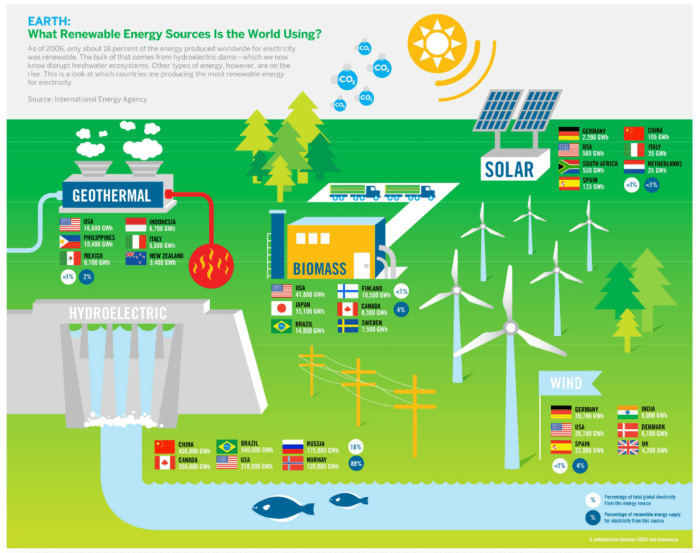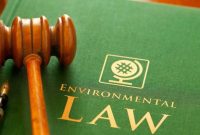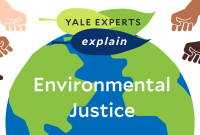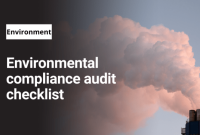Combating climate change and transitioning towards a sustainable future are paramount. Renewable energy, harnessing natural resources like sunlight and wind, offers a clean alternative to fossil fuels. However, developing and implementing renewable energy projects requires navigating a complex legal and environmental landscape. This article delves into Renewable Energy and Environmental Law (REEL), exploring its scope, key principles, and the intricate dance between harnessing clean energy and protecting our environment.
Definition and Scope
Renewable energy refers to energy derived from natural resources that replenish themselves over time. REEL governs the legal framework for developing and utilizing these resources while ensuring environmental safeguards. This field encompasses laws and regulations related to:
- Renewable energy sources: Solar, wind, geothermal, hydropower, biomass
- Project development: Land acquisition, permitting, construction, interconnection with the grid
- Environmental impacts: Land use, habitat loss, water consumption, air and noise pollution
Key Environmental Law Principles in REEL
Three core principles underpin REEL, guiding the development of regulations that minimize environmental degradation:
Sustainable development: Balancing economic growth with environmental protection to meet the needs of present and future generations.
Precautionary principle: Taking preventative measures to avoid environmental harm, even with incomplete scientific evidence.
Polluter pays principle: Holding those responsible for environmental pollution financially accountable for cleanup and prevention.
The Legal and Regulatory Framework for Renewable Energy
Governments worldwide recognize the importance of renewable energy in addressing climate change and energy security. Consequently, they are enacting a complex and ever-evolving legal framework to promote renewable energy development. This framework includes:
- Financial incentives: Tax credits, grants, and feed-in tariffs to make renewable energy projects more affordable.
- Renewable energy targets and mandates: Requiring utilities to generate a specific percentage of electricity from renewable sources.
- Environmental regulations: Ensuring projects comply with air and water quality standards, habitat protection laws, and waste management regulations.
The Role of Government Agencies and International Organizations
Government agencies play a crucial role in promoting renewable energy development through:
- Providing financial incentives: Making renewable energy projects more attractive to investors and developers.
- Establishing renewable energy targets and mandates: Driving the transition towards a cleaner energy future.
International organizations like the International Renewable Energy Agency (IRENA) also play a significant role by:
Providing technical assistance and capacity building: Helping developing countries implement renewable energy policies and projects.
Facilitating international cooperation: Fostering knowledge sharing and collaboration on renewable energy development.
Incentives and Subsidies for Renewable Energy Projects
A variety of incentives and subsidies can make renewable energy projects more financially viable. These include:
Tax credits: Reducing the tax burden for businesses and individuals who invest in renewable energy technologies.
Grants: Providing upfront funding to support renewable energy project development.
Rebates: Offering financial rewards after installing renewable energy systems.
Net metering: Allowing renewable energy system owners to sell excess electricity back to the grid at retail rates.
Environmental Impacts of Renewable Energy
While renewable energy offers significant environmental benefits, it’s not without potential downsides. It’s crucial to assess these impacts to ensure project sustainability:
Land use and habitat loss: Solar farms and wind turbines require land, potentially impacting wildlife habitats. Mitigation measures include careful site selection, habitat restoration, and wildlife monitoring.
Water consumption and pollution: Hydropower and geothermal energy can have water-related impacts. Mitigation measures include efficient water use, wastewater treatment, and minimizing harmful chemical use.
Air pollution and greenhouse gas emissions: While generally lower than fossil fuels, some renewable energy sources like biomass combustion can release air pollutants. Mitigation measures include using sustainable biomass sources, implementing pollution control technologies, and monitoring air quality.
Noise and visual impacts: Wind turbines can generate noise and visual impacts. Mitigation measures include careful siting, noise reduction technologies, and visual screening.
Waste and decommissioning: Renewable energy technologies eventually reach their lifespan and require decommissioning. Proper waste management and recycling are essential to minimize environmental impacts.
Legal Issues in Renewable Energy Project Development
Several legal complexities arise during renewable energy project development, including:
Land acquisition: Developers must navigate land use regulations, zoning restrictions, and property rights to secure land for projects.
Permitting: Obtaining various permits and approvals from federal, state, and local authorities for environmental impact, land use, and construction safety.
Construction: Adhering to building codes, environmental regulations, and safety standards during construction.
Interconnection with the Grid: Establishing legal agreements for interconnection with the electrical grid to deliver power to consumers.
Case Studies and Best Practices
Examining successful case studies can offer valuable insights into overcoming legal and environmental challenges in renewable energy development:
Case Studies:
Solar Star Project (California): This large-scale solar project demonstrates successful integration of renewable energy into sensitive ecosystems. By addressing environmental concerns and securing community support through early engagement, the project minimized its ecological footprint and fostered public acceptance.
Hornsdale Power Reserve (Australia): This world-leading battery storage facility highlights the potential of renewable energy to provide grid stability and flexibility. By integrating with renewable energy sources like wind and solar, battery storage helps balance fluctuations in energy generation and ensures a reliable electricity supply.
London Array Offshore Wind Farm (UK): This offshore wind farm showcases the challenges and successes of marine renewable energy development. The project navigated complex marine regulations and minimized environmental impacts through careful site selection and monitoring programs.
Best Practices for Legal and Environmental Compliance:
Drawing on the lessons learned from successful case studies, here are some best practices for legal and environmental compliance in renewable energy development:
Early Stakeholder Engagement: Proactively involve communities, environmental groups, and regulatory agencies early on in the development process. This fosters open communication, identifies potential concerns, and allows for collaborative solutions.
Comprehensive Environmental Impact Assessments: Conduct thorough assessments of potential environmental impacts, including land use changes, habitat loss, and water usage. Develop and implement mitigation strategies to minimize negative consequences.
Compliance with Regulatory Frameworks: Adhere to all applicable laws, regulations, and permitting requirements at the federal, state, and local levels. This ensures legal compliance and minimizes risks of project delays or denials.
Technology Innovation: Utilize advanced technologies to improve project efficiency, reduce environmental impacts, and enhance overall project viability. For example, using lighter wind turbine components can minimize land disturbance during construction.
Monitoring and Adaptive Management: Continuously monitor environmental impacts throughout the project lifecycle. Adapt operations as needed to address any unforeseen environmental issues and ensure long-term sustainability.
Emerging Trends in REEL
The dynamic landscape of REEL is constantly evolving. Here are some key trends to watch:
Decentralized Energy Systems: The increasing adoption of rooftop solar panels, microgrids, and community-based energy initiatives necessitates a flexible regulatory framework to accommodate these distributed energy sources.
Green Hydrogen: Growing interest in green hydrogen, a clean fuel produced using renewable energy, is driving the development of new regulations and incentives for its production, transportation, and storage.
Carbon Capture and Storage (CCS): Legal frameworks for CCS technologies are being developed to facilitate their integration into the energy mix. CCS captures carbon emissions from power plants and stores them underground, potentially contributing to achieving net-zero emissions.
Renewable Energy and Environmental Law plays a critical role in enabling a sustainable future. By navigating the legal complexities and implementing best practices for environmental compliance, we can harness the power of renewable energy while safeguarding our planet for generations to come. As technology advances and the energy landscape evolves, REEL will continue to adapt and provide the legal framework for a clean energy future.




